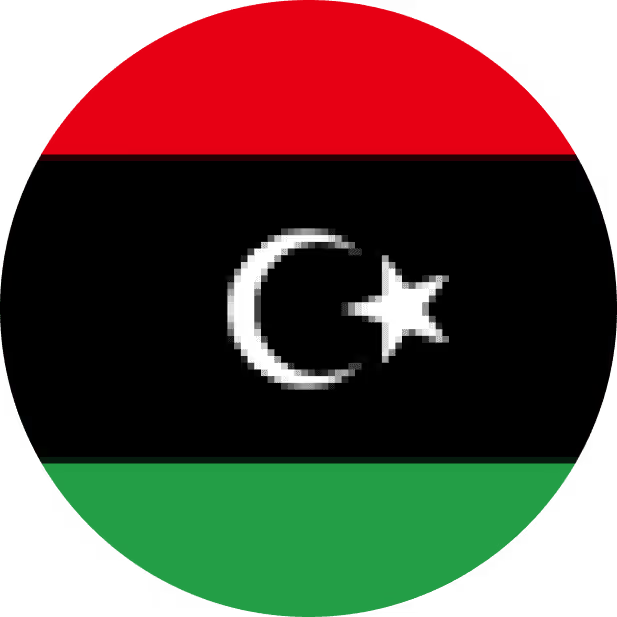Conflict resolution is a vital skill for any Human Resources (HR) professional. In a workplace that thrives on collaboration, innovation, and productivity, conflicts are bound to arise. However, unresolved disputes can lead to severe consequences, including diminished morale, lower productivity, and even higher turnover rates. So, how can HR teams navigate these issues and transform them into opportunities for growth and better team dynamics? In this comprehensive guide, we'll explore the intricacies of conflict resolution in the workplace and how HR professionals can effectively manage conflicts to foster a more positive and productive environment.
What is Conflict Resolution?
At its core, conflict resolution is the process of addressing and resolving disputes or disagreements in a constructive manner. In the context of the workplace, conflict resolution involves identifying the root causes of tensions between employees, teams, or departments and guiding them towards mutually beneficial solutions. Effective conflict resolution is not about avoiding confrontation but managing disagreements in a way that enhances collaboration, communication, and overall team dynamics.
For HR professionals, conflict resolution is more than just a necessary skill, it’s a fundamental aspect of their role. By effectively managing workplace conflicts, HR teams can create a harmonious environment where employees feel valued, heard, and respected.
Why is Conflict Resolution Essential in HR?
As HR professionals, understanding the significance of conflict resolution is crucial. Conflicts, when not managed well, can spiral out of control, leading to toxic work environments. Here are a few reasons why conflict resolution is essential in HR:
- Enhances Employee Morale: Unresolved conflicts can lead to frustration and a decrease in job satisfaction. When HR steps in to resolve issues, employees feel supported and valued, boosting morale.
- Increases Productivity: A conflict-free workplace allows employees to focus on their tasks without distractions. When conflicts are managed efficiently, teams can collaborate better, resulting in higher productivity.
- Reduces Turnover: Employees who feel that conflicts are being handled fairly and respectfully are more likely to stay with the company. On the other hand, unresolved issues can lead to dissatisfaction, eventually driving employees to leave.
- Fosters a Healthy Work Culture: A strong conflict resolution strategy helps build trust among employees. It promotes a culture of respect, inclusion, and open communication, ensuring that employees feel comfortable addressing issues without fear of retaliation.
Types of Workplace Conflicts
Before diving into the specifics of conflict resolution, it's essential to understand the various types of conflicts that can arise in the workplace. These conflicts can occur between individuals, teams, or even departments and can have a direct impact on the work environment.
Interpersonal Conflicts
Interpersonal conflicts are the most common form of disagreement in the workplace. These occur when two or more individuals clash due to differences in opinions, work styles, personalities, or values. For example, one employee may prefer working independently, while another thrives in a collaborative setting. These differences can lead to tension and, if not addressed, may hinder collaboration.
Team Conflicts
Team conflicts arise when there is a lack of communication, role ambiguity, or differences in working styles among team members. A team with unclear expectations and objectives may face struggles, leading to a breakdown in collaboration. Additionally, team members who don't trust or understand each other can find it difficult to work together effectively.
Manager vs. Employee Conflicts
Conflicts between managers and employees often stem from misunderstandings, miscommunication, or disagreements over expectations. For example, a manager might criticize an employee's performance without offering constructive feedback, leading to frustration. Similarly, employees may feel that their concerns are not being heard by their managers, which can escalate tensions.
Organizational Conflicts
Organizational conflicts are broader issues that arise due to structural, procedural, or cultural differences within the organization. These conflicts may involve disagreements between different departments or issues arising from unclear policies, lack of resources, or inconsistent leadership. For instance, marketing and sales teams might experience conflict if their goals and priorities are misaligned.
Steps in Conflict Resolution
Conflict resolution is a step-by-step process that involves identifying, understanding, and addressing the issue at hand. Below is a breakdown of the typical steps HR professionals should take when resolving conflicts in the workplace.
Step 1: Identify the Conflict
The first step in resolving any conflict is identifying the issue. HR professionals must recognize when conflicts are beginning to arise, whether it's between two employees, within a team, or at the organizational level. Observing changes in behavior, communication, or performance can be an indicator that a conflict is brewing.
Step 2: Gather Information
Once the conflict is identified, HR should gather relevant information from all parties involved. This is an essential step to ensure that everyone’s perspective is heard and understood. Conducting individual meetings with those involved can provide insights into the root cause of the conflict and the emotions driving it. Gathering detailed information allows HR to approach the situation with objectivity.
Step 3: Analyze the Issue
After gathering information, it’s time to analyze the situation. HR should assess the root cause of the conflict, whether it’s a result of poor communication, conflicting priorities, or differing work styles. Understanding the underlying issues is essential for developing an appropriate resolution strategy.
Step 4: Develop Solutions
Once the cause of the conflict is understood, HR professionals should work with the involved parties to brainstorm potential solutions. It's crucial to encourage open dialogue and ensure that everyone feels heard during this process. The solutions should focus on addressing the root cause of the conflict, not just the symptoms.
Step 5: Implement a Solution
With a solution in place, it's time to implement it. HR should guide the parties involved through the resolution process, ensuring that both sides are committed to the agreed-upon outcome. Depending on the situation, the solution may involve a change in communication strategies, role clarification, or providing additional support or resources to address the issues.
Step 6: Follow Up
The resolution process doesn't end with the implementation of the solution. HR should follow up with the involved parties to ensure that the issue has been resolved and that no new conflicts have arisen. Regular check-ins can help maintain open communication and ensure that the resolution is sustainable in the long term.
Conflict Resolution Styles
HR professionals must also be aware of different conflict resolution styles, as these can impact how conflicts are addressed. The most common conflict resolution styles include:
Avoidance
In avoidance, one party ignores the conflict or withdraws from the situation altogether. While this may provide temporary relief, it doesn't address the underlying issues and can lead to resentment and further tension.
Accommodation
Accommodation involves one party yielding to the other party's demands in order to avoid further conflict. While this can resolve the situation in the short term, it may lead to feelings of frustration and resentment if the underlying issue isn't properly addressed.
Competition
In a competitive conflict resolution style, one party seeks to win the dispute, often at the expense of the other party. This approach can lead to power struggles and resentment if both parties are unwilling to compromise.
Compromise
Compromise involves both parties giving up something in order to reach a middle ground. While compromise can be effective in resolving conflicts quickly, it may not always provide a lasting solution, as both parties may feel unsatisfied with the outcome.
Collaboration
Collaboration is the most effective and constructive conflict resolution style. In this approach, both parties work together to find a mutually beneficial solution that addresses the needs and concerns of both sides. This style fosters long-term cooperation and can help build stronger relationships.
Effective Communication in Conflict Resolution
Communication plays a critical role in conflict resolution. Without effective communication, conflicts can escalate, leading to misunderstandings and negative outcomes. HR professionals should encourage open and honest communication throughout the resolution process. Active listening, where both parties are given the opportunity to express their views without interruption, is an essential skill in resolving conflicts. Additionally, HR professionals should be mindful of non-verbal communication, such as body language, which can also influence the resolution process.
HR’s Role in Conflict Resolution
As the neutral mediator, HR plays a crucial role in conflict resolution. HR professionals must remain impartial and objective, guiding the parties involved towards a solution that is fair and equitable. They should create policies and procedures for conflict resolution and offer training to employees and managers on how to address conflicts effectively. HR’s role also extends to establishing a workplace culture that encourages open communication, respect, and collaboration.
How to Prevent Conflicts in the Workplace
While conflicts are inevitable, HR professionals can take steps to prevent them from escalating. By setting clear expectations for behavior and communication, HR can help employees navigate potential conflicts before they become larger issues. Offering training on conflict resolution, promoting a culture of respect, and encouraging regular feedback can also help minimize the likelihood of conflicts.
The Benefits of Conflict Resolution
When handled properly, conflict resolution can lead to several benefits for both individuals and the organization. These include:
- Increased Employee Satisfaction: Employees who feel their concerns are heard and addressed are more likely to be satisfied with their jobs.
- Improved Collaboration: Conflict resolution fosters stronger relationships and enhances teamwork.
- Higher Retention: Addressing conflicts proactively reduces turnover and helps retain top talent.
- Enhanced Productivity: With fewer distractions and tensions, employees can focus on their work, resulting in higher productivity.
Conclusion: Conflict Resolution as a Key HR Skill
Conflict resolution is a critical skill for HR professionals. By effectively managing conflicts, HR teams can create a workplace environment where employees feel supported, respected, and empowered. A well-implemented conflict resolution strategy leads to increased morale, productivity, and collaboration, ultimately contributing to the overall success of the organization.
HR professionals must embrace conflict resolution as part of their daily responsibilities and invest in developing strategies and tools to handle workplace disputes. Whether through training, mediation, or fostering open communication, HR's role in resolving conflicts is vital to maintaining a positive and productive workplace.
FAQ's
1. What is the difference between conflict resolution and conflict management in the workplace?
Conflict resolution is a specific process aimed at addressing and resolving conflicts as they arise, while conflict management is a broader approach that includes prevention strategies and ongoing management of potential conflicts in the workplace. Both are crucial for fostering a positive work environment, but conflict resolution deals with fixing immediate issues, while conflict management ensures long-term success by maintaining a healthy, collaborative culture.
2. Why is conflict resolution important for HR professionals?
HR professionals play a critical role in resolving conflicts by acting as neutral mediators. Effective conflict resolution enhances employee morale, improves collaboration, reduces turnover, and fosters a healthy, respectful work culture. It also allows HR to address potential issues before they escalate, preventing larger disruptions in the workplace.
3. How can HR prevent conflicts from escalating?
HR can prevent conflicts by setting clear expectations, encouraging open communication, and providing training in conflict resolution. Promoting a culture of respect, inclusion, and continuous feedback also helps minimize the likelihood of conflicts. By addressing minor issues early and equipping employees with conflict management skills, HR can mitigate the risk of bigger disputes.
4. What are the most common causes of workplace conflict?
Common causes of workplace conflict include poor communication, misunderstandings, differences in personality or work style, lack of clear expectations, and power struggles. Additionally, conflicts may arise due to organizational change, role ambiguity, or resource competition. HR can address these by fostering an open dialogue culture and clearly defining roles and responsibilities.
5. What strategies can HR use to resolve conflicts effectively?
HR can employ various strategies, including mediation, negotiation, and collaboration. The key is to listen actively to all parties involved, understand the underlying issues, and find a mutually agreeable solution. Creating a structured conflict resolution policy, providing conflict resolution training, and encouraging a respectful communication style are also vital for long-term success.














































.avif)